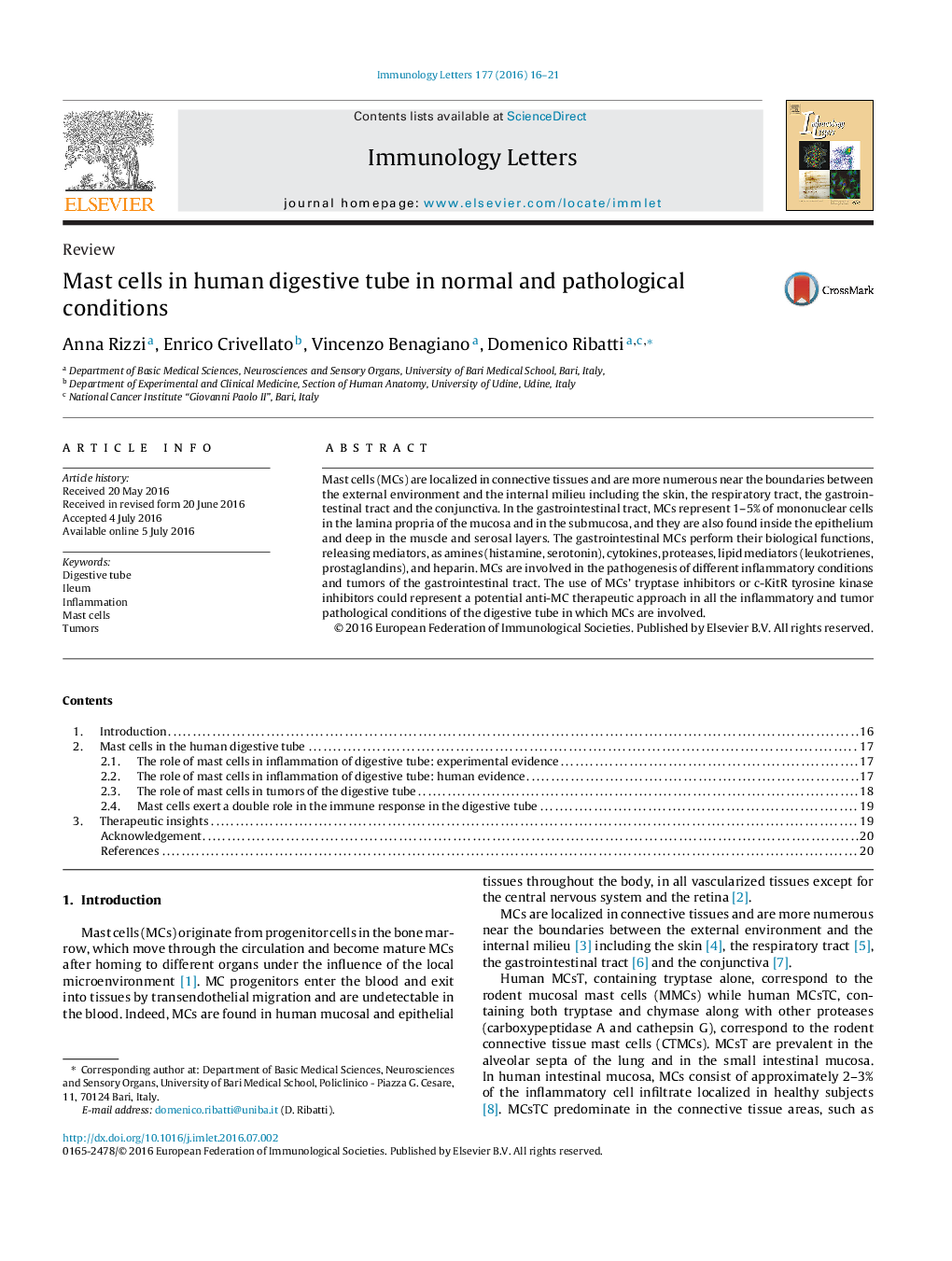| Article ID | Journal | Published Year | Pages | File Type |
|---|---|---|---|---|
| 3355229 | Immunology Letters | 2016 | 6 Pages |
•Mast cells are numerous in the gastrointestinal tract.•MCs are involved in the pathogenesis of inflammation and tumors of the gastrointestinal tract.•Tryptase inhibitors or TKIs could represent an anti-MC therapeutic approach.
Mast cells (MCs) are localized in connective tissues and are more numerous near the boundaries between the external environment and the internal milieu including the skin, the respiratory tract, the gastrointestinal tract and the conjunctiva. In the gastrointestinal tract, MCs represent 1–5% of mononuclear cells in the lamina propria of the mucosa and in the submucosa, and they are also found inside the epithelium and deep in the muscle and serosal layers. The gastrointestinal MCs perform their biological functions, releasing mediators, as amines (histamine, serotonin), cytokines, proteases, lipid mediators (leukotrienes, prostaglandins), and heparin. MCs are involved in the pathogenesis of different inflammatory conditions and tumors of the gastrointestinal tract. The use of MCs’ tryptase inhibitors or c-KitR tyrosine kinase inhibitors could represent a potential anti-MC therapeutic approach in all the inflammatory and tumor pathological conditions of the digestive tube in which MCs are involved.
